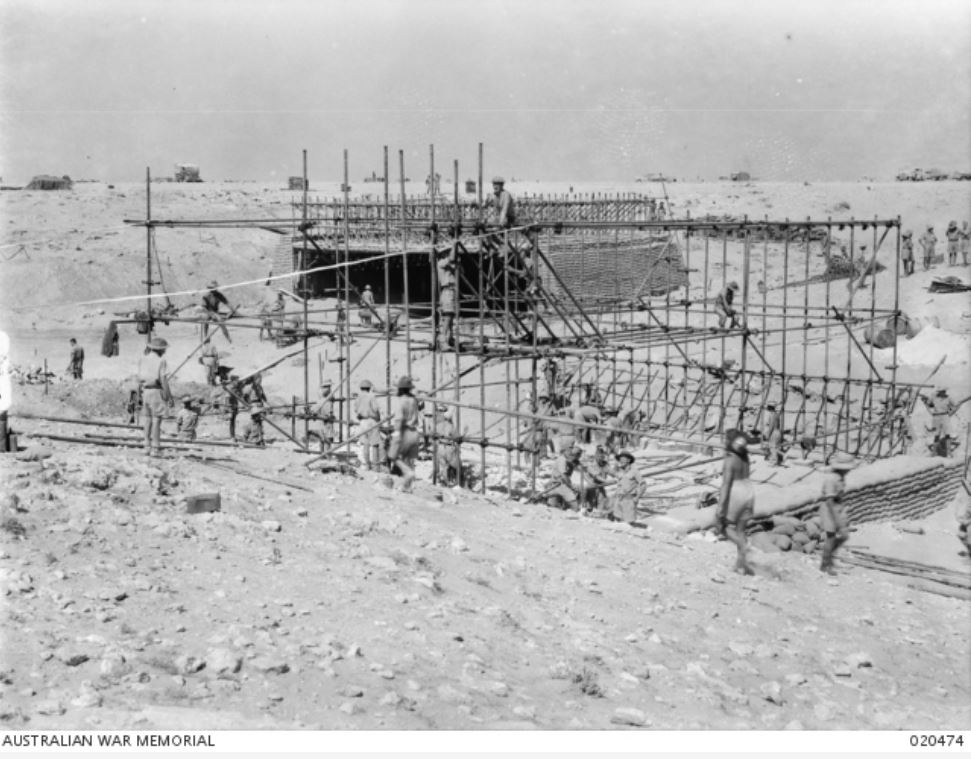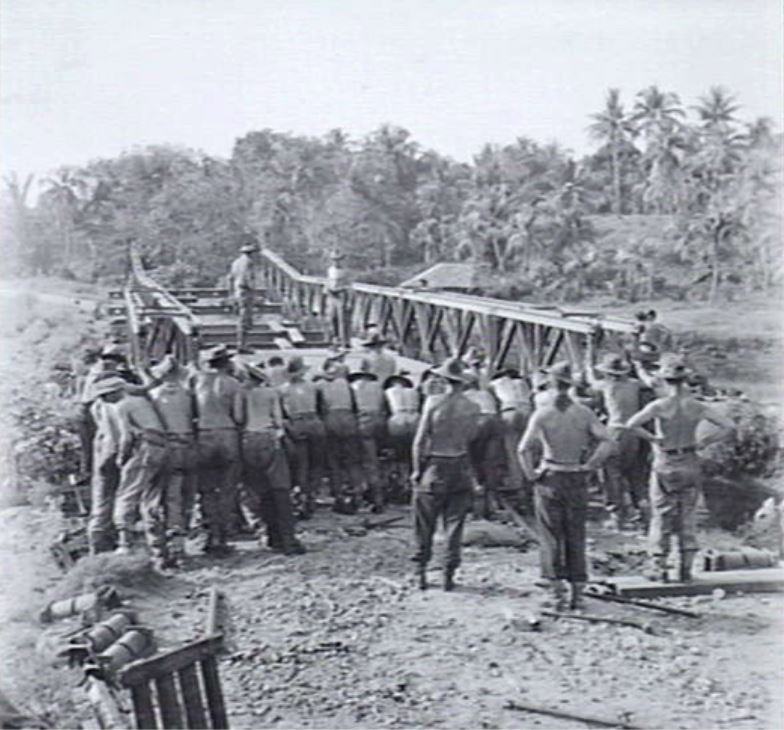2/7th Australian Field Company
From Our Contribution
 Constructing an aircraft hangar near El Gubbi, Tobruk. AWM photo 020474 | |
 11 Jun 1945 Labuan Island. Launching a Bailey Bridge AWM photo 10906 | |
Contents
[hide]Brief History
Formed as the 2/7th Army Field Company in May 1940 at Redbank, Queensland, training there until it left for the Middle East in late 1940. At Qastina, Palestine the unit was renamed 2/7th Field Company when it joined the 9th Division. In January 1941 they moved to Agedabia in Libya focused on providing water supply to forward areas. During the withdrawal to Tobruk they carried out demolitions and then participated in general engineering projects during the seige of Tobruk until relieved in September, after which they assembled at Beit Jirja in Palestine. In January 1942 they were in Syria when the 1st Australian Corrps left for Australia, leaving them working with the 9th Division units in the Tripoli area. They were rushed to Egypt when Rommel's Africa Korps advanced on Egypt, involved in the battles around El Alamein and in the relief of Tobruk. In early 1943 the 9th Australian Infantry Division was withdrawn to Australia, with its engineering units assembling at Walgrove in NSW before moving to Kairi in North Queensland.
In August 1943 the unit moved with the 26th Infantry Brigade to Milne Bay and the subsequent landing east of Lae. They worked on providing and upgrading tracks and river crossings to assist the inland advance. With Lae captured they moved there until they rejoined the 9th Division in November 1943 at Finschhafen. They then supported the 24th Infantry Brigade Group as it moved along the coast towards Sio. In January 1944 they were relieved by the 2/3 Field Company and were able to return to Ravenshoe in North Queensland.
In early 1945 the 9th Infantry Division was earmarked to land around Brunei Bay as it was planed to use it as a base for the British Pacific Fleet. In April they moved to the staging point on Morotai, and then landed on Labuan Island in June. They followed with a landing on the mainland at Weston, and began the advance on Beaufort. On Borneo the Field Company carried out numerous projects associated with road and rail infrastructure.
Thirty six men died while posted to this unit - 18 Killed in Action; seven Died of Wounds received in action; seven died from accidents; three from illness; and 1 from suicide. Anotheer 24 men were captured in North Africa and became Prisoners of War.
Unit Personnel
- John Peter Lewis Rymer 24 May - 7 Nov 1943
Individual Honours
- 1 x British Empire Medal
- 2 x Military Cross
- 4 x Military Medal
- 10 x Mentioned in Despatches
Notes
Content has come from The Unit Guide - Volume 3 - The Australian Army 1939-1945, page 3.472 - Graham R McKenzie-Smith - Big Sky Publishing - 2018